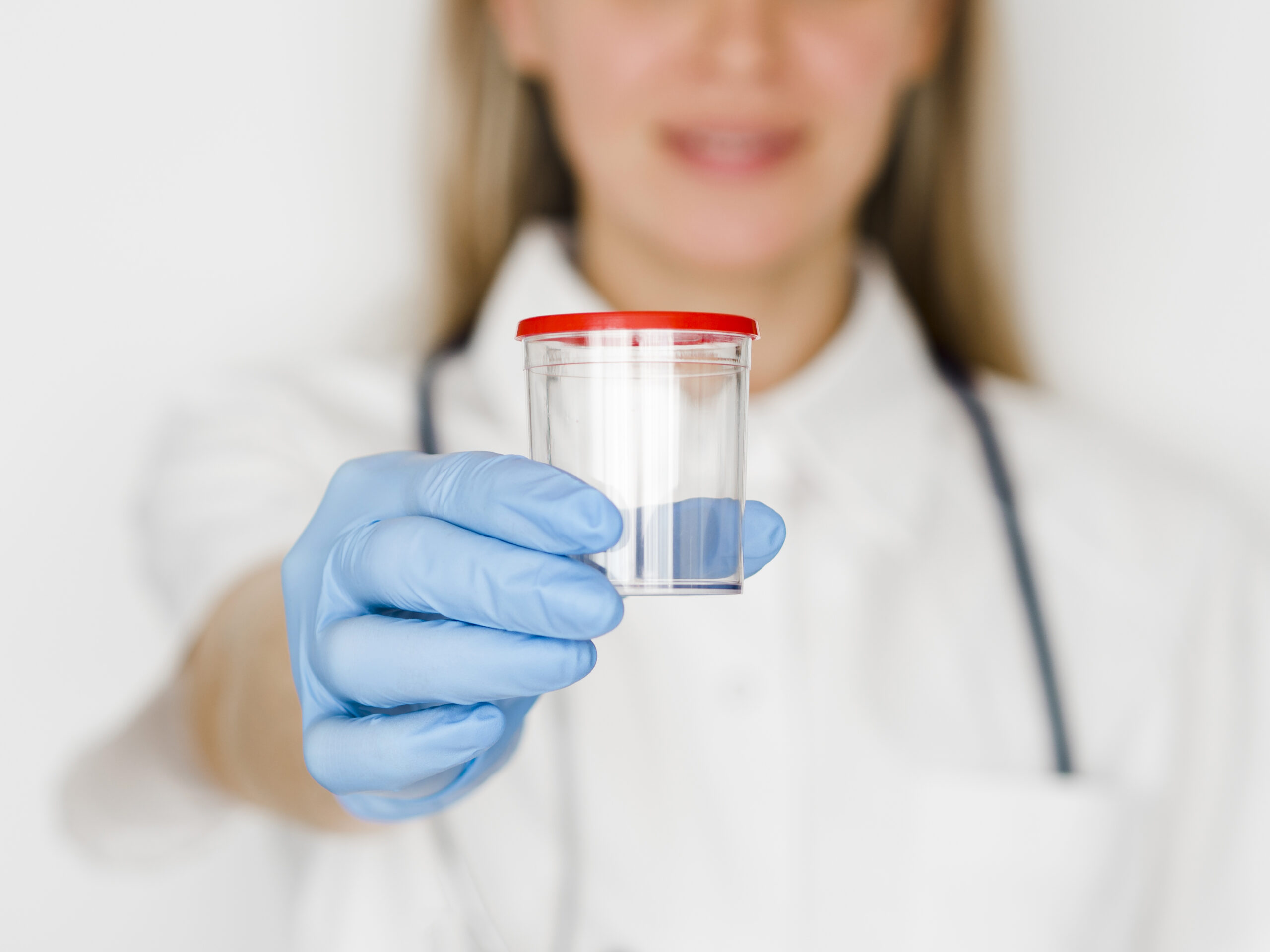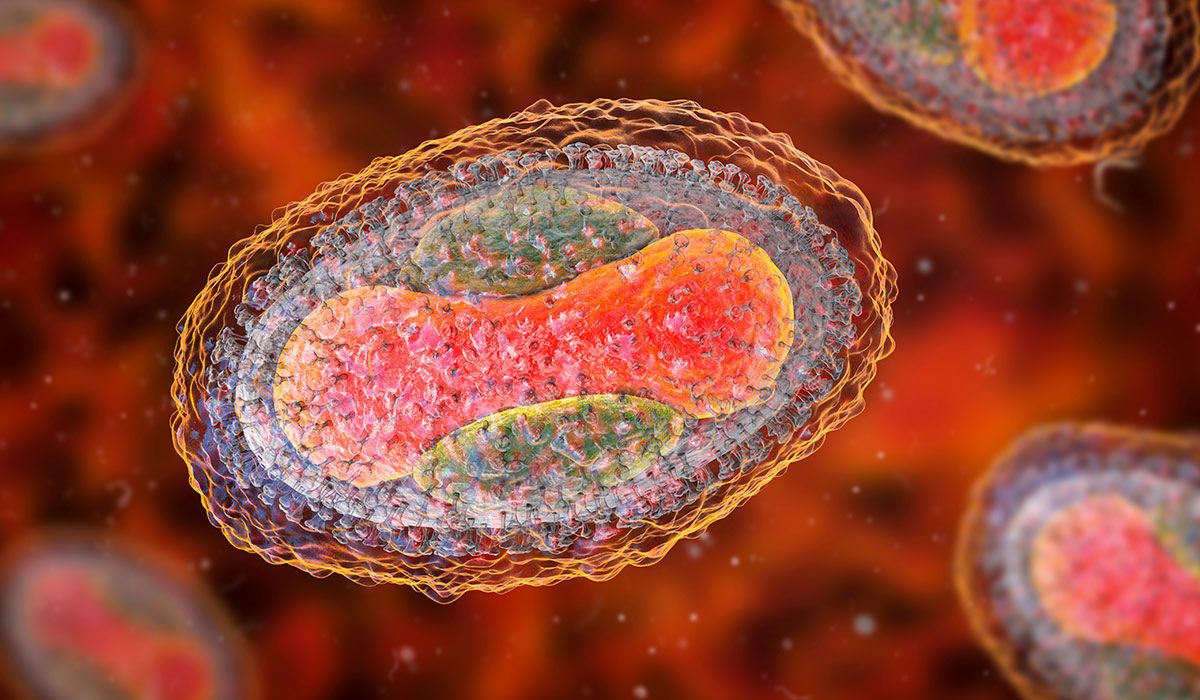Tapeworms are a group of parasites. They cannot live alone – they need another organism (the host) to survive. You can get them by consuming their eggs or larvae from food, water, or contact with affected animals and contaminated soil.
For most tapeworms![]() , a life cycle requires two distinct hosts
, a life cycle requires two distinct hosts![]() . The intermediate host is where a parasite develops from an egg to a larva. The definitive host is the other being, where the larva develops into an adult.
. The intermediate host is where a parasite develops from an egg to a larva. The definitive host is the other being, where the larva develops into an adult.
The three typical types of tapeworms include:
The kind of this parasite will affect the infected area of the body and influence how severe the condition is.
We also distinguish between armed and unarmed tapeworms.
The unarmed tapeworm![]() in its final form consists of individual parts: the head (scolex – the front part of the body) equipped with four suction cups, the snout – without hooks, strobili. The strobila is connected to the scolex by a neck. Reproductively, tapeworms are self-sufficient – they have both male and female reproductive apparatus. The unarmed tapeworm lives in the human small intestine. It is the last, final stop on the path of his life. It is where it reaches maturity. However, it does not immediately enter the human body.
in its final form consists of individual parts: the head (scolex – the front part of the body) equipped with four suction cups, the snout – without hooks, strobili. The strobila is connected to the scolex by a neck. Reproductively, tapeworms are self-sufficient – they have both male and female reproductive apparatus. The unarmed tapeworm lives in the human small intestine. It is the last, final stop on the path of his life. It is where it reaches maturity. However, it does not immediately enter the human body.
The intermediate host of the unarmed tapeworm is domestic cattle. The unarmed tapeworm in the human intestine grows very quickly – about 7 cm per day, producing a tremendous number of eggs. About three months pass from the moment it enters the human body until it reaches sexual maturity. When the tapeworm grows to about 6-7 meters, the segments break off and are excreted with the host's feces.
Armed tapeworm![]() reaches a length of 3 to 4 meters. Like the unarmed tapeworm, it consists of a scolex, a neck, and a strobila. However, unlike the first one, the scolex has a double wreath of hooks in addition to the suction cups. Also, in this case, tapeworm segments containing eggs with oncospheres inside (one of the first stages of tapeworm development) are excreted from the host body.
reaches a length of 3 to 4 meters. Like the unarmed tapeworm, it consists of a scolex, a neck, and a strobila. However, unlike the first one, the scolex has a double wreath of hooks in addition to the suction cups. Also, in this case, tapeworm segments containing eggs with oncospheres inside (one of the first stages of tapeworm development) are excreted from the host body.
Humans become infected by eating raw or undercooked infected meat. The stroma enters the human intestine, where the coating breaks and the scolex emerges, attaching itself firmly to the wall – budding and producing subsequent strobila members.
Symptoms of tapeworm![]() infection are non-specific. At first, they may be mistakenly attributed to other digestive system diseases. The signs themselves become more severe over time and may persist for years.
infection are non-specific. At first, they may be mistakenly attributed to other digestive system diseases. The signs themselves become more severe over time and may persist for years.
When infected with an adult tapeworm, the course is asymptomatic![]() . In some cases, its symptoms resemble tapeworm caused by an unarmed tapeworm. However, when an armed tapeworm larva enters the human body, there is a high risk of developing cysticercosis. Cysticercosis is usually asymptomatic in the first months or years of infection. Therefore, the first symptoms or exacerbation may be observed in later years.
. In some cases, its symptoms resemble tapeworm caused by an unarmed tapeworm. However, when an armed tapeworm larva enters the human body, there is a high risk of developing cysticercosis. Cysticercosis is usually asymptomatic in the first months or years of infection. Therefore, the first symptoms or exacerbation may be observed in later years.
In a common tapeworm, the following will appear:

Cysticercosis![]() produces symptoms depending on the location of the cysts in the body. They usually affect the body parts like muscles, eyes, subcutaneous tissue, and the central nervous system.
produces symptoms depending on the location of the cysts in the body. They usually affect the body parts like muscles, eyes, subcutaneous tissue, and the central nervous system.
Symptoms observed in cysticercosis include:
There is also inflammation of the brain and/or meninges. Due to the long-term presence and harmful effects of the body cysts, it may damage many organs. As a result, the functioning of entire systems may be impaired.
As mentioned above, symptoms vary depending on the type of tapeworm. They include:
Some tapeworms cause a disease called echinococcosis![]() . Parasites hatch from swallowed dog tapeworm eggs in the human intestine. They pass through the intestinal mucosa and reach the liver, where most nest. Some enter the bloodstream and travel with the bloodstream to various systems and organs. Invasion of Echinococcus Granulosus
. Parasites hatch from swallowed dog tapeworm eggs in the human intestine. They pass through the intestinal mucosa and reach the liver, where most nest. Some enter the bloodstream and travel with the bloodstream to various systems and organs. Invasion of Echinococcus Granulosus![]() larvae leads to single or multiple unilocular cysts in the liver, the lungs, and less often in the spleen, brain, and bones.
larvae leads to single or multiple unilocular cysts in the liver, the lungs, and less often in the spleen, brain, and bones.
In multilocular echinococcosis, the target organ is the liver. Numerous bubbles form there, which take on a spongy structure. Sometimes, multilocular echinococcosis crosses the borders of the liver and affects nearby organs (e.g., kidney, diaphragm, pancreas, lung, mediastinum).
Most cases of echinococcosis are asymptomatic. Hydatid cysts of the liver generally grow slowly. They range in diameter from several to 30 cm. The course of the disease depends on the number of cysts, their size, and their location in relation to the liver capsule, bile ducts, and large vessels. If the cyst grows slowly, the patient may not experience any symptoms for years. Fast-growing cysts may cause abdominal pain, bloating, distension in the epigastrium, and sometimes nausea.
In the case of pressure on the bile ducts or if the cyst breaks through into the lumen of the bile ducts, mechanical jaundice occurs, and in the case of pressure on the vessels – symptoms of portal hypertension. A hydatid cyst may become infected with bacteria, giving a clinical picture similar to a liver abscess. The cyst may also rupture – spontaneously or as a result of abdominal trauma – causing symptoms of an acute abdomen or anaphylactic shock.
Lung cysts sometimes manifest themselves with chest pain, chronic cough, and sometimes with hemoptysis. Neurological symptoms appear quite quickly if the hydatid cyst is located in the brain: headaches, nausea, and vomiting. A bone cyst may cause a pathological fracture. Sometimes, there may be jaundice. If invasion of adjacent organs occurs, the symptoms are diverse and non-specific. The doctor may find that the liver is enlarged in some patients with liver involvement.
The doctor usually performs stool and blood tests in the common tapeworm infection diagnosis. A stool sample should be collected three times at intervals prescribed by your doctor. The laboratory diagnostician will test the model for what is in it and will look for the presence of tapeworm segments or eggs.
When it comes to blood, a complete blood count with a smear is performed. The most common symptom is eosinophilia, i.e., an increased level of eosinophils, a type of white blood cell.
In a situation where tapeworm infection leads to cysticercosis, advanced diagnostic methods that detect calcifications or cysts prove helpful.

Imaging tests, blood tests, and postoperative material tests are useful to diagnose echinococcosis![]() . Examination of material taken during surgery allows to confirm echinococcosis. In many cases, this disease is detected accidentally. It usually happens when a patient undergoes a chest X-ray or abdominal ultrasound examination ordered by a specialist due to another health problem.
. Examination of material taken during surgery allows to confirm echinococcosis. In many cases, this disease is detected accidentally. It usually happens when a patient undergoes a chest X-ray or abdominal ultrasound examination ordered by a specialist due to another health problem.
If hydatid disease is suspected in the brain, a CT scan is used to determine the cysts' size, number, and exact location. Magnetic resonance imaging is used when multilocular echinococcosis infiltrates adjacent organs. This way, it will be possible to assess what tissues the echinococcosis invades and to what extent. In the results of laboratory tests performed on blood, we should be concerned about changes in the following parameters: a percentage increase in the number of eosinophils, increased values of liver enzymes and bilirubin, and a decrease in the amount of protein.
All described tests are examples of advanced diagnostics. Tests are always ordered by a doctor, considering the information obtained in the interview and the results of other tests.
Many of the symptoms associated with tapeworms are not specific to them. Therefore, during diagnostics, the patient should be examined for infections with other parasites, peptic ulcer disease, enteritis, pancreatitis, and giardiasis.
The implemented therapy depends, among others, on the type of tapeworm, the patient's general condition, and the location of the lesions. Tapeworms can be treated pharmacologically (medications) or surgically.
In cysticercosis![]() , sometimes the emphasis is placed only on treating epilepsy, edema, hypertension, or hydrocephalus. In rare cases, surgery is performed. In symptomatic patients or with multiple cysts, the specialists recommend antiparasitic medications.
, sometimes the emphasis is placed only on treating epilepsy, edema, hypertension, or hydrocephalus. In rare cases, surgery is performed. In symptomatic patients or with multiple cysts, the specialists recommend antiparasitic medications.
The best way to treat unilocular echinococcosis is surgical removal of the entire cyst![]() , sometimes puncture, with simultaneous administration of antiparasitic drugs. Unfortunately, there is a risk of anaphylactic shock during the procedure due to cyst rupture and parasites spreading to surrounding tissues.
, sometimes puncture, with simultaneous administration of antiparasitic drugs. Unfortunately, there is a risk of anaphylactic shock during the procedure due to cyst rupture and parasites spreading to surrounding tissues.
In multilocular echinococcosis, the above-mentioned surgical treatment is combined with medicaments. After surgery, patients take medications for at least two years. Unfortunately, some patients do not qualify for surgery and must constantly undergo chemotherapy and regular check-ups. There are also diseases without treatment, but the health condition is only monitored. However, it should be borne in mind that undetected and untreated echinococcosis may lead to death.
The prognosis for tapeworms caused by the unarmed form is usually favorable.
The prognosis is not the best in the case of a disease caused by an armed tapeworm, as the risk of developing cysticercosis increases. As the disease progresses, many organs are damaged, leading to disturbances in the functioning of entire systems.
Currently, in the case of unilocular echinococcosis, the prognosis is good – especially in young people with a cyst not exceeding 6 centimeters. The forecast is poor in cerebral forms. Uncertain in multilocular echinococcosis.
The most common echinococcosis complications are anaphylactic shock, bacterial superinfection, inflammation of the affected organs, recurrent echinococcosis, and generalized disease process.
It is impossible to avoid tapeworm infection altogether. We can reduce the risk of disease by following sanitary and hygienic rules. It is significant to prevent the illegal export of human excrement to cultivation places. Also, ensure reliable veterinary supervision of animal breeding and slaughterhouses.
Prevention against tapeworms![]() is proper hygiene and food safety.
is proper hygiene and food safety.
Here is how to protect yourself against tapeworms:
A diet rich in alkaline foods is also effective in prevention, as parasites usually prefer an acidic environment. It is worth introducing cloves, garlic, sauerkraut juice, pickled cucumbers, and pumpkin seeds into the diet – these are natural deworming agents.

Some people change their eating habits to healthier ones with calorie restrictions and include physical activity to lose weight. However, more and more people are taking tapeworm tablets![]() , which can be purchased online.
, which can be purchased online.
Once the tapeworm tablet is in the digestive tract, the tapeworm head attaches to the intestinal wall, and the parasite begins to grow – it can reach up to several meters in length. It consumes unnecessary substances and destroys the body, resulting in weight loss.
Sellers promise miraculous slimming effects. They also promise that after achieving your desired body weight, you can get rid of the parasite very quickly by using deworming agents.
The truth is different – tapeworm is very difficult to eliminate and requires many months of therapy.
Table of Contents

Ovarian cysts are among the most common changes in the reproductive organs of women regardless of their age. Are they… read more »

Baker's cyst can signify a more serious health problem, but it is generally considered mild. The most common complaints associated… read more »

A Bartholin cyst is a sort of sac that fills with liquid and can develop bigger in one of the… read more »

Giardiasis is a disease that causes symptoms of diarrhea. Some people are at greater risk of a severe course and… read more »

Molluscum contagiosum is a common skin infection especially in children. Find out how to recognise molluscum contagiosum skin lesions. Learn… read more »

Fatty liver is a condition in which fat builds up inside the liver. It usually doesn't cause symptoms and is… read more »

Kidneys are two bean-shaped organs that filter your blood from waste products. What are its other functions? How are they… read more »

Liver cancer is a tumor that is found in the liver. The most common symptoms include jaundice, unexpected weight loss,… read more »

Cirrhosis of The Liver is a condition where the liver is damaged and liver function is impaired. The most common… read more »